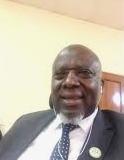Comparing Classroom Competence and Attitude between SESEMAT Trained and Non-SESEMAT Trained Teachers in Eastern Uganda
DOI:
https://doi.org/10.53449/ije.v3i1.107Keywords:
in-service training, competences, SESEMAT, secondary schoolsAbstract
This paper presents a comparison of professional competence and attitude between teachers trained in Secondary Science and Mathematics Teachers’ (SESEMAT) Programme and those not trained in it in Eastern Uganda. The study was based on a realization that though the government provides facilitation to enable teachers undergo training through the SESEMAT programmes, teachers seem not to keenly use SESEMAT methodologies. The study was guided by two objectives: to establish whether there are differences in professional competences between SESEMAT- and non-SESEMAT- trained teachers in Uganda, and to determine whether there are differences in attitude towards teaching between SESEMAT-trained teachers and other teachers of science and mathematics. The study employed semi-experimental design. Ten secondary schools were sampled and 40 teachers were observed during lessons and also given questionnaires. Data analysis was done using the independent sample t-tests to compare the classroom professional competences and attitudes between SESEMAT-trained and non-SESEMAT-trained teachers. It was concluded that given enough time, teachers would implement SESEMAT competences / skills taught during the INSETS. The study recommended that more teachers should be encouraged to attend the SESEMAT INSETS to be able to understand the competences required during the delivery of lessons. This may help improve on the number of quality passes at Ordinary level in science subjects.
Downloads
References
Azhari, S., & Zaleha, I. (2015). The elements of teachers’ competency for creative teaching in mathematics. International Education Studies Vol. 8, No. 13; 2015 ISSN 1913-9020
Gacohi. K. M., Sang, K. A & Ngesa, U. F. (2005). Effects of SMASSE programme in–service education and training on the teaching of mathematics and science in secondary schools in Koibatek district, Kenya.
Iwuagwu. B. O., & Aiwuyo, M. O. (2017). Effect of in-service training on effective classroom control and student’s relationship in secondary schools in Edo central senatorial district. African Educational Research Journal, 5(2), 152-155.
Japan International Cooperation Agency (JICA). (2017). Secondary science and mathematics teachers’ programme. Retrieved from: https://www.jica.go.jp
Kamwine, E. (2018). An assessment of the implementation of subsidiary mathematics and subsidiary information communication technology curricula at advanced level. Kampala: National Curriculum Development Centre.
Kariisa, H. (2017). Perceptions of secondary school mathematics teachers towards secondary science and mathematics teachers (SESEMAT) programme in Mbarara District, Uganda. International Journal of Recent Advances in Multidisciplinary Research.
Ke¬te¬van, K., & Garakanidze, E. (2010). The professional competencies of the 21stcentury school teacher. Problems of education in the 21st century Volume 20, Ilia state univer¬sity, Georgia.
Kisangi, A., & Ateng, O. (2013). Enhancing teachers’ capacity through in-service education & training: A reflection on projects for Strengthening Mathematics, Science and Technology Education in Africa: Slideshare.
Komakech, R. A. (2014). Uganda SESEMAT programme: Impact and challenges in its implementation. Washington DC: Researchgate.net.
Maclean, I.F. (2018). In-service training and job performance in public secondary schools in River State, Nigeria: International Journal of Scientific Research in Education, 11(3B), 493-520.
Makaaru, J. A., Nick, T., Emma, B., & Oloya, C. (2019). Secondary education in Sub-Saharan Africa teacher preparation and support: A case of Uganda. Johannesberg: Mastercard Foundation.
Malunda, P. (2018). Teacher professional development and quality of pedagogical practices in public secondary schools in Uganda. Retrieved from: https://www.researchgate.net.
Meister, D. G. (2010). Experienced secondary teachers’ perception of engagement and effectiveness: A guide for professional development. Pennsylvania USA.The Qualitative Report vol.15.NO 4,880-898, (2010).
Ministry of education and Sports, (2006). Teaching guidelines for science and mathematics teachers (SESEMAT) programme. Kampala Uganda.
Muyingo, J. C. (2017). Minister for higher education in Uganda blames teachers for poor performance in science: Africa News, Retrieved from www.africanews.com
Pallant, J. (2013). SPSS survival manual: A step by step guide to data analysis using IBM SPSS. Berkshire, England: McGrow Hill Education.
Ssempala, F. (2017). Science teachers’ understanding and practice of inquiry-based instruction in Uganda. NewYork: Syracuse University.
SESEMAT programme, (2008). Pilot expansion cycle two national training. Teamwork in the teaching and learning of science and mathematics. Kampala Uganda.
Tynan.H and Greenes.S. (2012). Using SPSS for data analysis: support document for SPSS output tables, office of planning, assessment, research and quality. University of Wisconsin.
UNESCO. (2012). Report on UN decade of education of tomorrow for sustainable development. DESD monitoring & evaluation. : Arjen, E. J.
UNESCO. (2017). cracking the code: Girls and Women’s education in science and technology, engineering and mathematics (STEM).7 Place de Fontenoy, 75352 Paris 07 sp, France.
Vossen, T. E. (2019). Attitudes of Secondary School STEM Teachers towards Supervising Research and Design Activities. Washington DC: Research in Science Education.
Young, T. (2016). Student Teachers' Attitudes Towards Science (STATS). London: https://www.tandfonline.com.
Yvonne, U. (2018). Teachers’ A eachers’ Attitudes T ttitudes Toward Teaching Science in a New Z eaching Science in a New Zealand. Gillan: University of Auckland.








